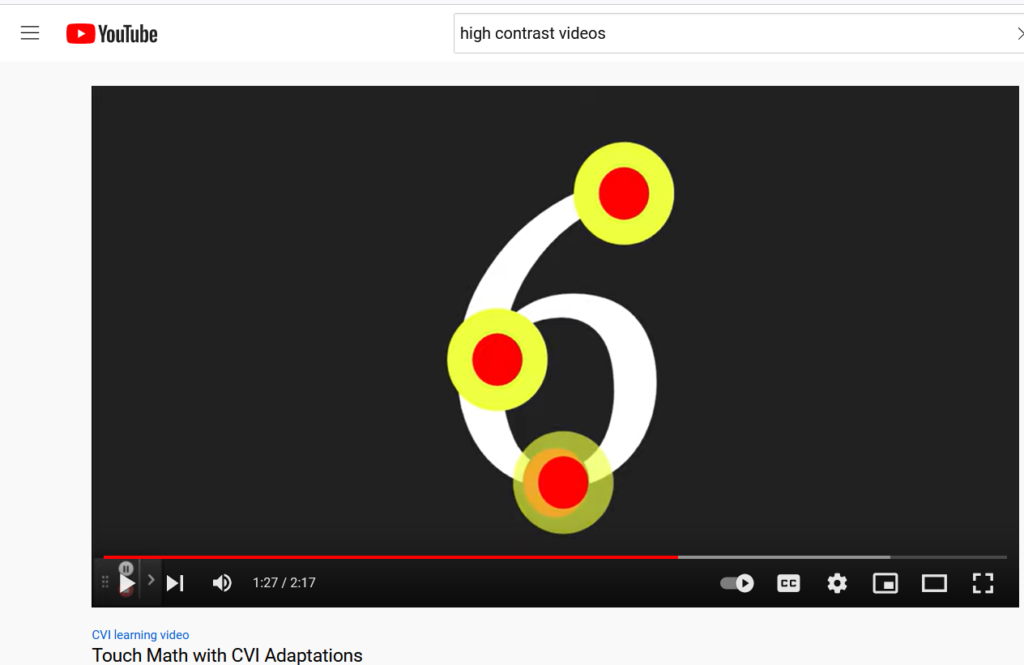While students with a visual impairment all depend on their ability to listen, they may need help to develop skills to help them to do so more efficiently. Young children and students with multiple disabilities will benefit from practice with auditory discrimination, or learning to tell which sounds are associated with which activities or events. Learning to identify and interpret auditory cues in the environment are an important component of traveling safely and independently. Listening skills include listening comprehension (understanding what we have heard), sound localization (being able to tell where a sound is coming from), and auditory discrimination (identifying what a sound is).
Listening Comprehension
Many children who are blind or visually impaired are able to repeat back what they hear, but it is important to keep in mind that this is not the same as understanding what they hear. You can help your child or student to develop these skills by asking questions to encourage them to digest information and to think about what they have heard. This can be when you are reading a story, watching TV, or having a conversation. It need not be limited to formal classroom lessons.
Jim Durkel, Speech Language Pathologist, Texas School for the Blind and Visually Impaired, offers advice to parents and teachers on how to ensure the best possible listening skills for students who are blind or visually impaired:
- Assess each student’s hearing on a regular basis.
- Protect the child’s hearing.
- Provide instruction in developing listening skills.

Suggested activities for families to improve listening skills
1. Read with your child!
Try to engage the child as fully as possible when reading, and encourage him or her to explain what just happened or to predict what will happen next. Ask why something happened in the story or what they would do in the character’s situation.
2. Play listening games, such as asking your child to point to a particular sound.
This type of activity will help a child to locate where a sound is coming from, which is a very important skill for orientation and mobility.
3. Play “I hear with my little ear”.
Identifying different sounds helps the child to develop auditory discrimination skills.
For more ideas, see Jim Durkel’s Advice on Sensory Efficiency Listening Skills
For more information about the development of auditory skills in children who are deafblind, see The Importance of Auditory Training for Children who are Deafblind by Jim Durkel.
Tips for Teaching Listening Skills in School
Although listening skills are not designed to replace braille reading, they are an essential communication skill that all children need to possess. For many individuals who read braille, listening skills will become essential when they enter middle and high school where the academic load and reading quantity grow exponentially. Read more in Jodi Floyd’s article on this topic.
See also Lizbeth Barclay’s article Integrating Listening Skills with Literacy Skills Instruction: Infants, Preschool and Kindergarten.
Using Listening Skills to Learn about the Environment
I Hear With My Little Ear: Teaching Auditory Object Perception (AOP) to Young Students
By Diane Brauner, COMS, AER Report, Vol. 26, No. 3 (Fall 2009)
While this article focuses on the development of Orientation and Mobility Skills, it also includes helpful suggestions on how to encourage students to listen carefully and to analyze what they hear as they travel.
Sound Travels – a tool to assist the team to evaluate the sound environment related to mobility
Additional Resources
Are You Listening? by Kate Moss Hurst
Listening Skills webinar with Ann Adkins (TSBVI). Handout from webinar.
Listening Skills Instruction, Teaching Students with Visual Impairments
Using Story Time to Teach Listening Skills, Family Connect




